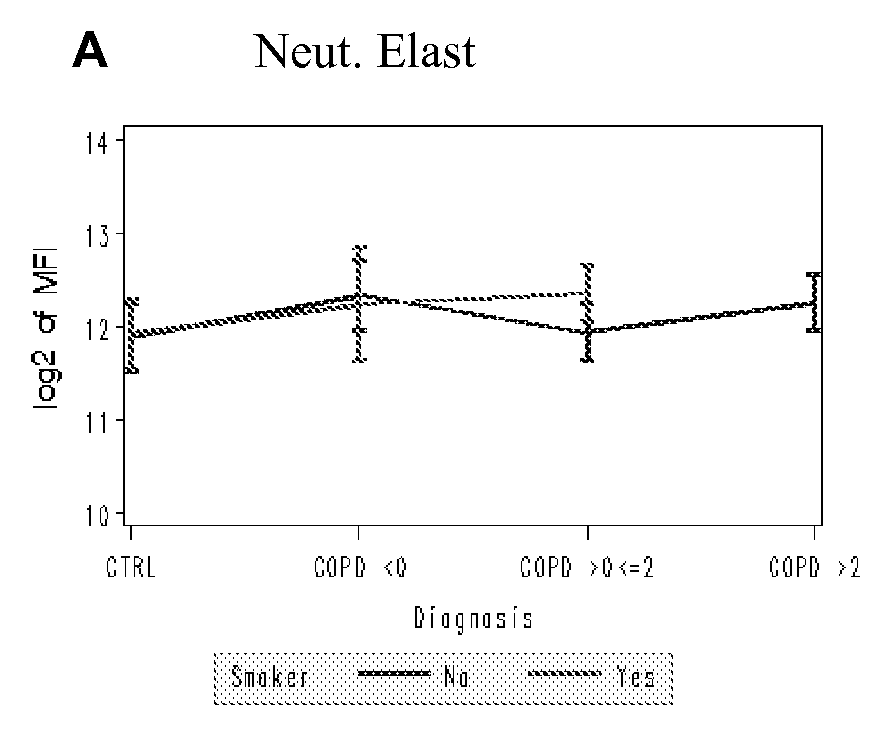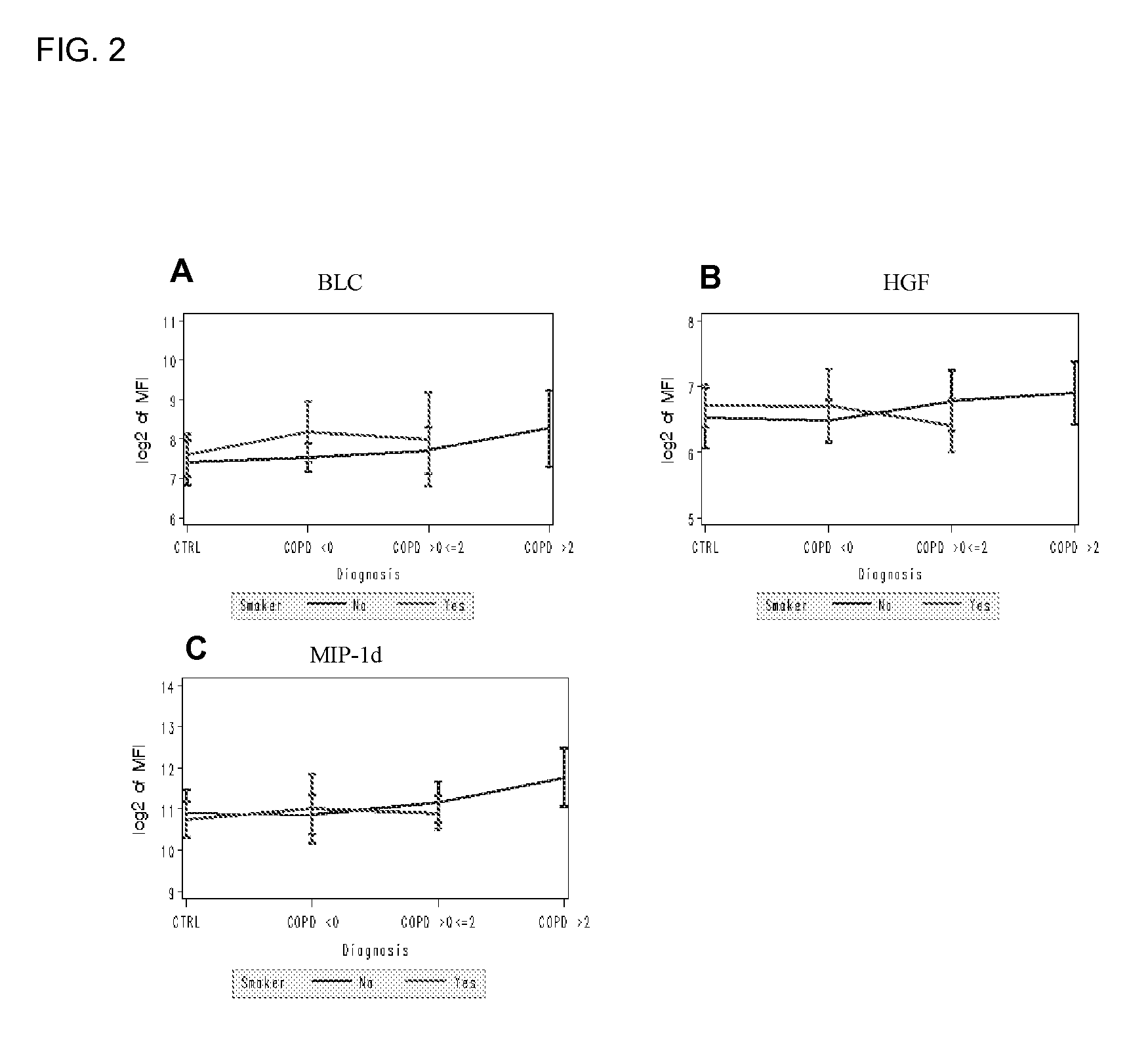Biomarkers for chronic obstructive pulmonary disease
a technology of obstructive pulmonary disease and biomarkers, which is applied in the field of biomarkers for chronic obstructive pulmonary disease, can solve the problems of copd-afflicted individuals also facing muscle strength loss, inability to perform common daily activities, and little hope of recovery
- Summary
- Abstract
- Description
- Claims
- Application Information
AI Technical Summary
Benefits of technology
Problems solved by technology
Method used
Image
Examples
example 1
Microarray Manufacture
[0119] Glass slides were cleaned and derivatized with 3-cyanopropyltriethoxysilane. The slides were equipped with a Teflon mask that divided the slide into sixteen 0.65 cm diameter wells or circular analysis sites called subarrays (FIG. 6). Printing was accomplished with a Perkin-Elmer SpotArray Enterprise non-contact arrayer equipped with piezoelectric tips, which dispense a droplet (˜350 pL) for each microarray spot. Antibodies were applied at a concentration of 0.5 mg / mL at defined positions. Each chip was printed with sixteen copies of one type of array, either array 1, 2, 3, 4, 5 or 6. A set of antibodies as indicated in Table 12 below was printed with quadruplicate spots in each subarray. An exemplary microarray slide is depicted in FIG. 6.
[0120] After printing, chips were inspected using light microscopy. If the percentage of missing spots observed was greater than 5%, then the batch failed and the slides were discarded immediately. For all print runs ...
example 2
RCA Immunoassay
[0122] Prior to assay, the slides were removed from storage at room temperature in sealed containers and opened in a humidity controlled chamber (45-55%). Slides were blocked with Seablock (Pierce Chemical Co.), diluted 1:1 with PBS for 1 h at 37° C. in a humidified chamber. Following removal of the blocking solution, they were washed twice with 1×PBS / 0.5% Brij 35 prior to application of sample. Four controls were included on each sample slide with feature concentrations corresponding to four anchor points on the full titration curve. The test samples were assayed on the remaining 12 subarrays.
[0123] Twenty μL of the treated sample were applied to each subarray. The basics of performing immunoassays with RCA signal amplification are described in Nat. Biotechol. (2002) 20:359-65). Slides were scanned using a LS200 scanner (TECAN). The fluorescence intensity of microarray spots was analyzed for each feature and sample, and the resulting mean intensity values were dete...
example 3
Sample Grouping Statistics
[0125] Levels of 142 proteins were determined in 95 serum samples from COPD (47) and healthy controls (48). Each group was further divided into non-smokers (40 healthy controls, 39 COPD) and smokers (8 healthy controls, 8 COPD) (Table 1).
TABLE 1Grouping statistics.Patient StatisticsCOPD exacerbations per yearSmokingCTRL0>0 >2TotalNo4012121579Yes844016Total4816161595
[0126] More than 94 percent of the samples passed MSI quality control (Table 2), exceeding the 85% minimum acceptable pass rate, indicative of successful completion of data generation according to MSI SOP.
TABLE 2Sample pass rate by array.ArrayPass Rate195.8%299.3%396.8%494.4%598.9%
Precision Assessment
[0127] Slide-to-slide imprecision was reduced using regression-based normalization. Slide-to-slide-variability (CV) was 24%, 24%, 27%, 22%, 23% on average, for Array 1, 2, 3, 4 and 5, respectively (Table 3). These values are consistent with standard platform performance.
TABLE 3...
PUM
| Property | Measurement | Unit |
|---|---|---|
| volumes | aaaaa | aaaaa |
| diameter | aaaaa | aaaaa |
| concentration | aaaaa | aaaaa |
Abstract
Description
Claims
Application Information
 Login to View More
Login to View More - R&D
- Intellectual Property
- Life Sciences
- Materials
- Tech Scout
- Unparalleled Data Quality
- Higher Quality Content
- 60% Fewer Hallucinations
Browse by: Latest US Patents, China's latest patents, Technical Efficacy Thesaurus, Application Domain, Technology Topic, Popular Technical Reports.
© 2025 PatSnap. All rights reserved.Legal|Privacy policy|Modern Slavery Act Transparency Statement|Sitemap|About US| Contact US: help@patsnap.com



